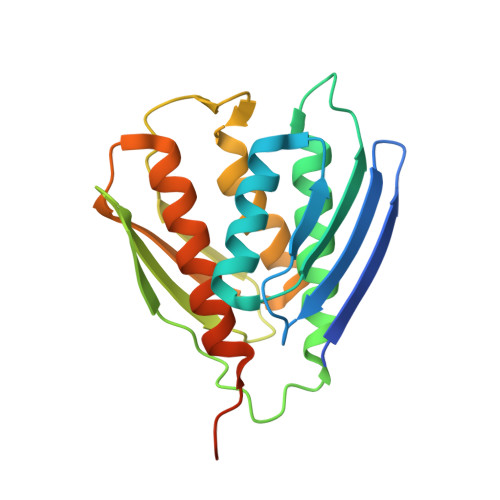Structure and mechanism of imidazoleglycerol-phosphate dehydratase.
Glynn, S.E., Baker, P.J., Sedelnikova, S.E., Davies, C.L., Eadsforth, T.C., Levy, C.W., Rodgers, H.F., Blackburn, G.M., Hawkes, T.R., Viner, R., Rice, D.W.(2005) Structure 13: 1809-1817
- PubMed: 16338409
- DOI: https://doi.org/10.1016/j.str.2005.08.012
- Primary Citation of Related Structures:
2F1D - PubMed Abstract:
The structure of A. thaliana imidazoleglycerol-phosphate dehydratase, an enzyme of histidine biosynthesis and a target for the triazole phosphonate herbicides, has been determined to 3.0 A resolution. The structure is composed of 24 identical subunits arranged in 432 symmetry and shows how the formation of a novel dimanganese cluster is crucial to the assembly of the active 24-mer from an inactive trimeric precursor and to the formation of the active site of the enzyme. Molecular modeling suggests that the substrate is bound to the manganese cluster as an imidazolate moiety that subsequently collapses to yield a diazafulvene intermediate. The mode of imidazolate recognition exploits pseudosymmetry at the active site arising from a combination of the assembly of the particle and the pseudosymmetry present in each subunit as a result of gene duplication. This provides an intriguing example of the role of evolution in the design of Nature's catalysts.
Organizational Affiliation:
Krebs Institute for Biomolecular Research, Department of Molecular Biology and Biotechnology, University of Sheffield, Firth Court, Western Bank, Sheffield, S10 2TN, United Kingdom.
















